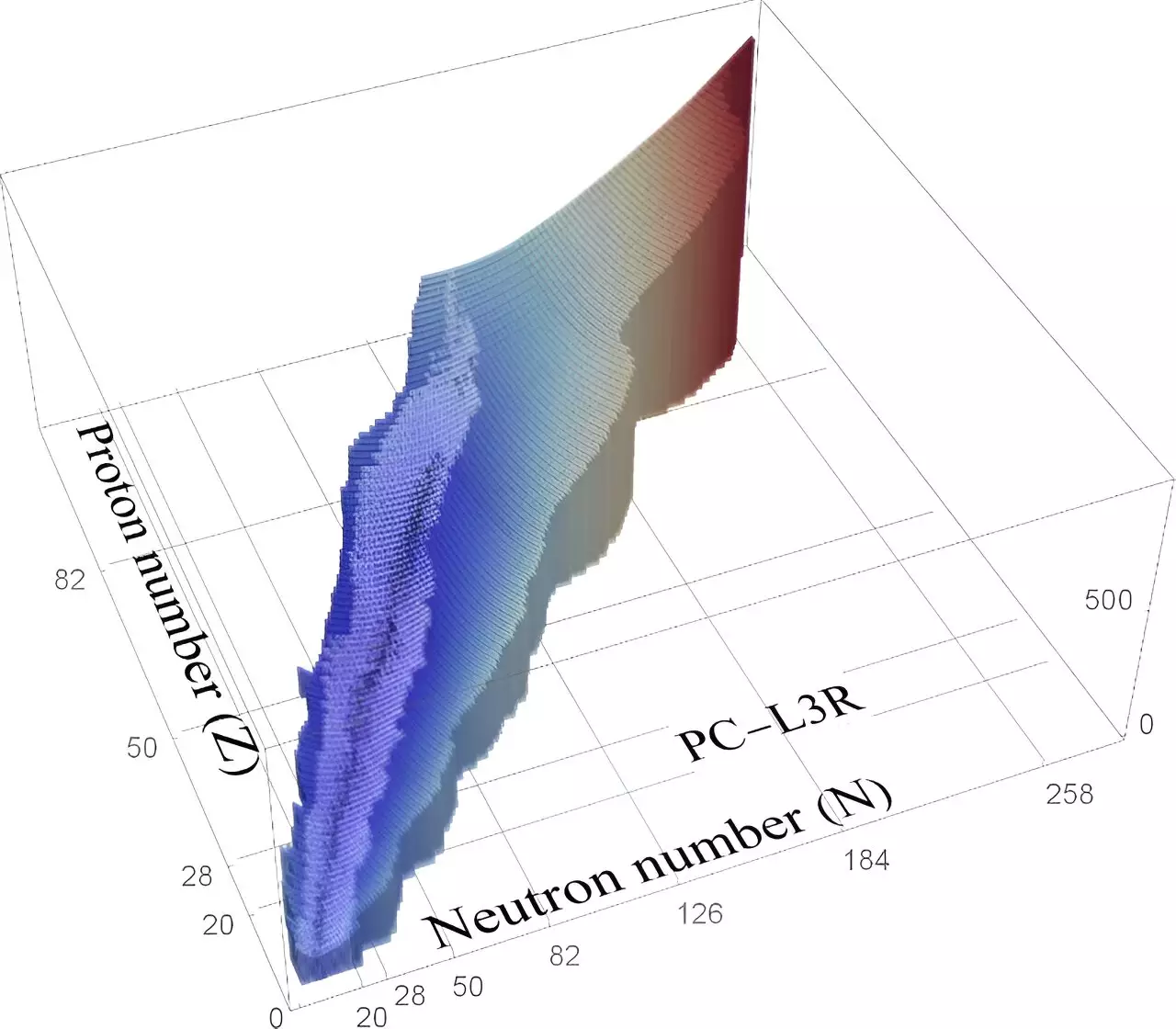Nuclear physics has always been an arena for groundbreaking discoveries, expanding our knowledge of the universe’s chemical elements. The recent collaboration between the Institute of Modern Physics (IMP) of the Chinese Academy of Sciences (CAS) and Technische Universität München has yielded exciting results in the study of exotic nuclei. By employing the covariant density functional theory, the researchers have predicted the existence of previously unknown isotopes, pushing the boundaries of our understanding of nuclear physics. Published in the esteemed journal Atomic Data and Nuclear Data Tables, this research offers valuable insights into the origins of chemical elements and the nature of quantum many-body systems.
The ability to experimentally confirm the existence of newly discovered isotopes and explore their properties is crucial for advancing our understanding of nuclear physics. These experiments require accurate determination of nuclear masses, radii, and half-lives. Reliable theoretical predictions serve as indispensable guidelines in this regard. Furthermore, investigating the last bound nuclei of isotopic chains enables us to evaluate the extent of nucleosynthesis in extreme astrophysical environments, such as neutron star mergers, core-collapsed supernovae, and X-ray bursts. The findings obtained from these experiments not only enhance our comprehension of nuclear theories but also shed light on the complexities of chemical element synthesis.
The study conducted at the IMP utilized the covariant density functional theory, a highly successful approach in studying nuclear structure. This theory effectively describes the interactions between nucleons within the nuclear medium. These interactions can be represented either as point-coupling interactions, assuming nucleons as point-like particles, or as meson-exchange interactions, assuming nucleons as constituents communicating through mesons. Researchers incorporated one of these interactions into the relativistic Hartree-Bogoliubov approach to systematically investigate the ground state properties of isotopic chains ranging from oxygen to darmstadtium. These properties encompass binding energies, separation energies, radii, distributions, Fermi surfaces, spins, and parities associated with the nuclei.
Exotic nuclei, characterized by their potential to exhibit new phenomena, serve as a testing ground for our understanding of quantum many-body systems. With approximately 2,500 nuclides experimentally proven to exist, the anticipation for discovering more exotic nuclei has intensified. New generation radioactive-ion beam facilities hold immense promise in unraveling phenomena never witnessed before. The ability to match theoretical predictions with experimental findings will enable researchers to cross-validate and refine their theoretical models, leading to even more exciting breakthroughs in the field of nuclear physics. This convergence of theory and experiment will undoubtedly push the boundaries of our knowledge and revolutionize our understanding of the universe’s fundamental building blocks.
Building upon the ground-state properties of nuclei, the researchers delved into various pertinent aspects of nuclear physics. The drip line of neutrons and protons, often associated with the halo phenomenon, gained comprehensive attention in this study. The concept of halo nuclei, where nucleons extend significantly beyond the nuclear surface, adds an intriguing dimension to our understanding of nuclear structure. The study’s findings shed light on the existence and properties of halo nuclei in different isotopic chains, opening new avenues for future investigations. Additionally, new magic numbers, which denote a significant increase in nuclear stability, were explored in detail. By incorporating theoretical predictions into experimental research, scientists can chart the uncharted territory of nuclear physics, assuring exciting possibilities for further discoveries.
This pioneering study provides invaluable guidance for future experiments and theoretical research within the field of nuclear physics. The predicted properties of the exotic nuclei discovered using the covariant density functional theory serve as a roadmap for future investigations. Armed with this knowledge, researchers can design experiments to validate these predictions, thereby deepening our understanding of nuclear structure and fostering the discovery of new isotopes. The intersection of theoretical predictions and experimental findings promises to unlock unprecedented insights into the complexities of nuclear physics.
The collaboration between the IMP and Technische Universität München has ushered in a new era of discoveries in nuclear physics. Utilizing the covariant density functional theory, researchers have predicted the existence of exotic nuclei, fostering a deeper understanding of the origins of chemical elements. Moreover, this study showcases the potential for advancements in our comprehension of quantum many-body systems. As we explore new frontiers in experimental research and theoretical modeling, we can anticipate further breakthroughs that will illuminate the mysteries of the universe’s building blocks. The discoveries made thus far provide a foundation upon which future investigations can be built, promising even more exciting findings in the realm of nuclear physics.


Leave a Reply